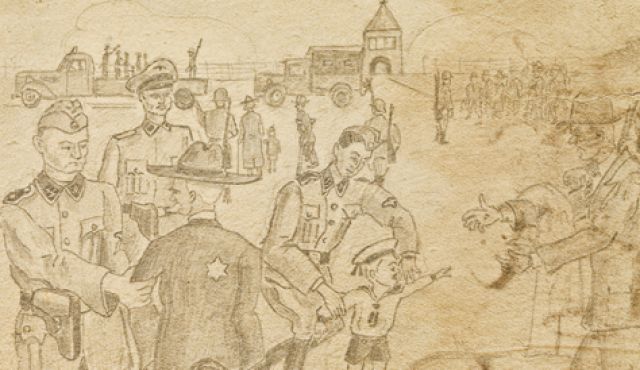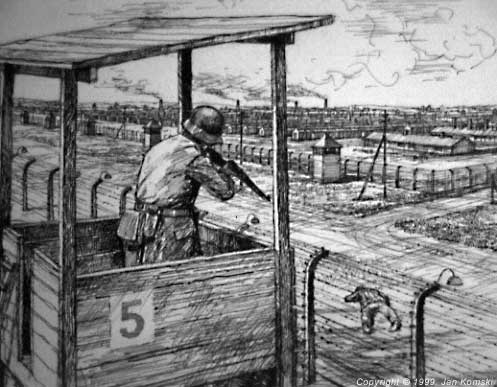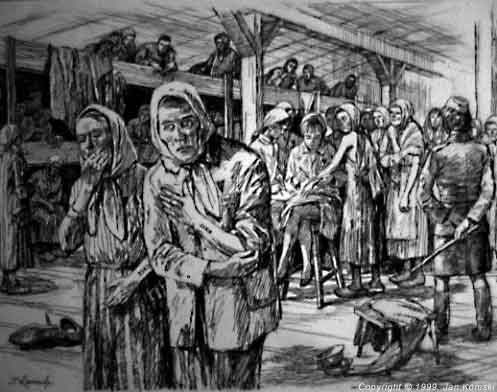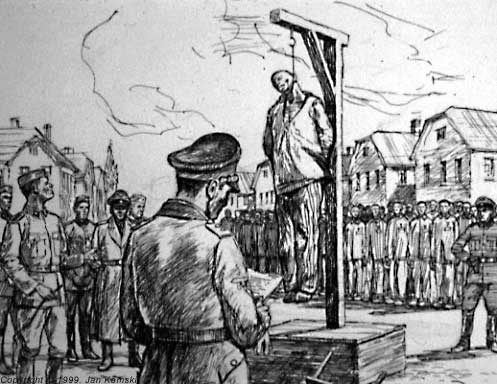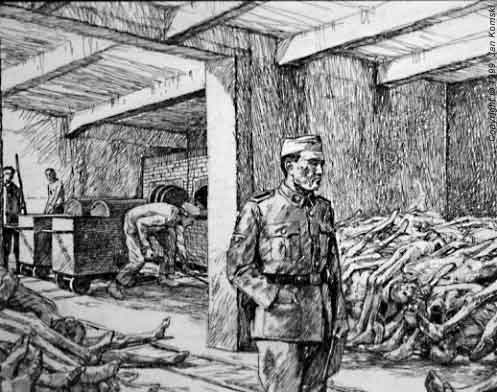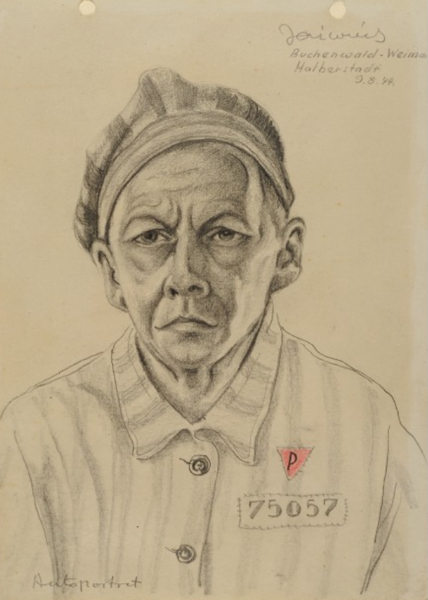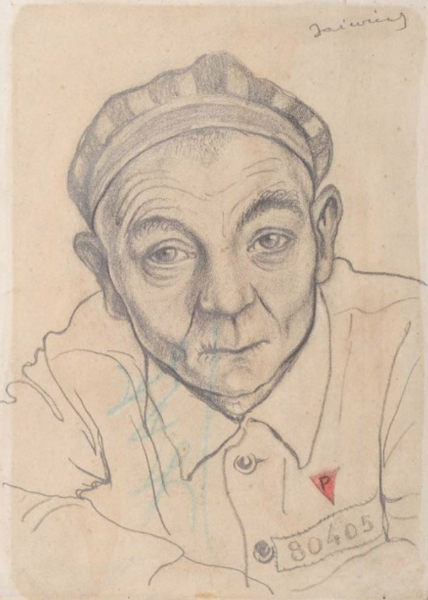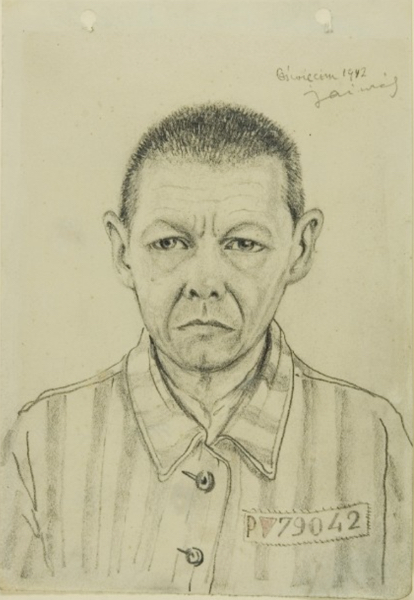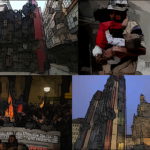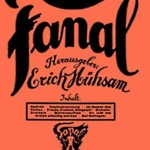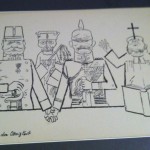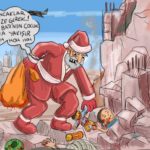Art in Ausschwitz
“The Sketchbook from Auschwitz” contains 22 pictures drawn in 1943 by an unknown prisoner at the camp. The sketches, mostly drawn in pencil, document images of life and death at the concentration camp. The sketches were discovered in 1947 by a former prisoner at the camp who worked there as a guard after the liberation. They had been stuffed into a bottle and hidden in the foundations of one of the buildings near the gas chambers and crematoria.
Jan Komski, a Polish painter, was arrested on the Poland/Czechoslovakia border attempting to reach the newly formed Polish Army in France. He was sent to Auschwitz on June 14, 1940. After the war, he married another Auschwitz survivor. They moved to the United States in 1949. In the U.S he worked as a graphic artist with The Washington Post. Over the years, he created many drawings and paintings of life in a concentration camp.
Franciszek Jaźwiecki, was a political dissident imprisoned at Auschwitz. He drew over 100 portraits of fellow prisoners during his incarceration. Agnieszka Sieradzka, an art historian at the Auschwitz Birkenau State Museum, points out that she believes Jaźwiecki was acutely aware of the historical significance that his portraits would gain. The majority of the drawings include the subject’s prisoner number, which the artist included in order to help identify the individuals in the drawing.
Art in the concentration camps was partly used by the Nazis making musicians play chamber music when other prisoners were marching to the gas chambers for example. Children had to perform famous German Fairy tails like “Snow white and the seven dwarfs” to entertain Nazi officers. But art was also a tool for prisoners to document the horrible and to create something immortal facing the totalitarian death factory of Auschwitz.
Experience the amazing true story of Dina Gottliebova Babbitt, an artist who survived two years at Auschwitz by painting portraits for the infamous Dr. Josef Mengele. She was also drawing “Snow white” in the Ausschwitz children’s squat.
http://youtu.be/p8Q-7_jLMs4
Related Posts
Tags: Art, Auschwitz, Dr. mengele, germany, History, Nazi Germany, Passenger, Snow white and the seven dwarfs, WW II
Trackback from your site.

